-
EXECUTIVE SUMMARY
-
MARKET INTRODUCTION
-
Definition
-
Scope of the Study
- Research Objective
- Assumptions
- Limitations
-
RESEARCH METHODOLOGY
-
Overview
-
Data Mining
-
Secondary Research
-
Primary Research
- Primary Interviews
- Breakdown of Primary Respondents
-
and Information Gathering Process
-
Forecasting Modality
-
Market Size Estimation
- Bottom-Up Approach
- Top-Down Approach
-
Data Triangulation
-
Validation
-
MARKET DYNAMICS
-
Overview
-
Drivers
-
Restraints
-
Opportunities
-
MARKET FACTOR ANALYSIS
-
Value Chain Analysis
-
Porter’s Five Forces Analysis
- Bargaining Power
- Threat of New Entrants
- Threat of Substitutes
- Intensity of Rivalry
-
of Suppliers
-
5.2.2.
-
Bargaining Power of Buyers
-
COVID-19 Impact Analysis
- Market Impact Analysis
- Regional Impact
- Opportunity and
-
Threat Analysis
-
6.
-
GLOBAL AUTOMOTIVE FINANCE MARKET, BY PROVIDER TYPE OUTLOOK
-
Overview
-
Banks
-
OEMs
-
Other Financial Institutions
-
GLOBAL AUTOMOTIVE FINANCE MARKET, BY FINANCE TYPE
-
OUTLOOK
-
7.1.
-
Overview
-
7.2.
-
Direct
-
7.3.
-
Indirect
-
8.
-
GLOBAL AUTOMOTIVE FINANCE MARKET, BY PURPOSE TYPE OUTLOOK
-
Overview
-
Loan
-
Leasing
-
Others
-
GLOBAL AUTOMOTIVE FINANCE MARKET, BY VEHICLE TYPE OUTLOOK
-
Overview
-
Commercial Vehicles
-
Passenger Vehicles
-
GLOBAL AUTOMOTIVE
-
FINANCE MARKET, BY REGION
-
Overview
-
North America
- U.S.
- Canada
-
Europe
- Germany
- France
- U.K
- Italy
- Spain
- Rest of Europe
-
Asia-Pacific
- China
- India
- Japan
- South Korea
- Australia
- Rest of Asia-Pacific
-
Rest of the World
- Middle East
- Africa
- Latin America
-
COMPETITIVE LANDSCAPE
-
Overview
-
Competitive Analysis
-
Market Share Analysis
-
Major Growth Strategy in the Global Automotive
-
finance Market,
-
11.5.
-
Competitive Benchmarking
-
Leading Players in Terms of Number of Developments in the Global
-
Automotive finance Market,
-
Key developments and Growth Strategies
- New Provider Type Outlook Launch/Finance
- Merger & Acquisitions
- Joint Ventures
-
Type Outlook Purpose Type Outlook
-
Major Players Financial Matrix
- Sales & Operating
-
Income, 2022
-
11.8.2.
-
Major Players R&D Expenditure. 2022
-
COMPANY PROFILES
-
ALLY FINANCIAL
- Company Overview
- Financial Overview
- Provider Type Outlooks Offered
- Key Developments
- SWOT Analysis
- Key Strategies
-
Bank of America
- Company Overview
- Financial Overview
- Provider Type
- Key Developments
- SWOT Analysis
- Key Strategies
-
Outlooks Offered
-
12.2.4.
-
Key Developments
-
12.2.5.
-
SWOT Analysis
-
12.2.6.
-
Key Strategies
-
12.3.
-
CAPITAL ONE
-
12.3.1.
-
Company Overview
-
12.3.2.
-
Financial Overview
-
12.3.3.
-
Provider Type Outlooks Offered
-
Chase Auto Finance
- Company Overview
- Financial Overview
- Provider Type Outlooks Offered
- Key Developments
- SWOT Analysis
- Key Strategies
-
Daimler Financial
- Key Developments
- SWOT Analysis
- Key Strategies
-
Services
-
12.5.1.
-
Company Overview
-
12.5.2.
-
Financial Overview
-
12.5.3.
-
Provider Type Outlooks Offered
-
FORD MOTOR CREDIT COMPANY
- Company Overview
- Financial Overview
- Provider Type
- Key Developments
- SWOT Analysis
- Key Strategies
-
Outlooks Offered
-
12.6.4.
-
Key Developments
-
12.6.5.
-
SWOT Analysis
-
12.6.6.
-
Key Strategies
-
12.7.
-
GM Financial Inc.
-
12.7.1.
-
Company Overview
-
12.7.2.
-
Financial Overview
-
12.7.3.
-
Provider Type Outlooks Offered
-
Hitachi Capital
- Company Overview
- Financial Overview
- Provider Type Outlooks Offered
- Key Developments
- SWOT Analysis
- Key Strategies
-
Toyota Financial
- Key Developments
- SWOT Analysis
- Key Strategies
-
Services
-
12.9.1.
-
Company Overview
-
12.9.2.
-
Financial Overview
-
12.9.3.
-
Provider Type Outlooks Offered
-
Volkswagen Financial Services
- Company Overview
- Financial Overview
- Provider Type
-
Outlooks Offered
-
12.10.4.
-
Key Developments
-
12.10.5.
-
SWOT Analysis
-
12.10.6.
-
Key Strategies
-
13.
-
APPENDIX
-
13.1.
-
References
-
13.2.
-
Related Reports
-
-
LIST OF TABLES
-
GLOBAL AUTOMOTIVE
-
FINANCE MARKET, SYNOPSIS, 2018-2032
-
GLOBAL AUTOMOTIVE FINANCE MARKET, ESTIMATES &
-
FORECAST, 2018-2032 (USD BILLION)
-
GLOBAL AUTOMOTIVE FINANCE MARKET, BY PROVIDER TYPE OUTLOOK,
-
GLOBAL AUTOMOTIVE FINANCE MARKET, BY FINANCE TYPE OUTLOOK,
-
GLOBAL AUTOMOTIVE FINANCE MARKET, BY PURPOSE TYPE OUTLOOK,
-
GLOBAL AUTOMOTIVE FINANCE MARKET, BY VEHICLE TYPE OUTLOOK,
-
NORTH AMERICA AUTOMOTIVE FINANCE MARKET, BY PROVIDER TYPE OUTLOOK,
-
NORTH AMERICA AUTOMOTIVE FINANCE MARKET, BY FINANCE TYPE OUTLOOK,
-
NORTH AMERICA AUTOMOTIVE FINANCE MARKET, BY PURPOSE TYPE OUTLOOK,
-
NORTH AMERICA AUTOMOTIVE FINANCE MARKET, BY VEHICLE TYPE OUTLOOK,
-
NORTH AMERICA AUTOMOTIVE FINANCE MARKET, BY COUNTRY, 2018-2032
-
(USD BILLION)
-
TABLE
-
U.S. AUTOMOTIVE FINANCE MARKET, BY PROVIDER TYPE OUTLOOK, 2018-2032 (USD BILLION)
-
U.S. AUTOMOTIVE
-
FINANCE MARKET, BY FINANCE TYPE OUTLOOK, 2018-2032 (USD BILLION)
-
U.S. AUTOMOTIVE FINANCE
-
MARKET, BY PURPOSE TYPE OUTLOOK, 2018-2032 (USD BILLION)
-
U.S. AUTOMOTIVE FINANCE MARKET, BY VEHICLE
-
TYPE OUTLOOK, 2018-2032 (USD BILLION)
-
CANADA AUTOMOTIVE FINANCE MARKET, BY PROVIDER TYPE
-
OUTLOOK, 2018-2032 (USD BILLION)
-
CANADA AUTOMOTIVE FINANCE MARKET, BY FINANCE TYPE OUTLOOK,
-
CANADA AUTOMOTIVE FINANCE MARKET, BY PURPOSE TYPE OUTLOOK,
-
CANADA AUTOMOTIVE FINANCE MARKET, BY VEHICLE TYPE OUTLOOK,
-
EUROPE AUTOMOTIVE FINANCE MARKET, BY PROVIDER TYPE OUTLOOK,
-
EUROPE AUTOMOTIVE FINANCE MARKET, BY FINANCE TYPE OUTLOOK,
-
EUROPE AUTOMOTIVE FINANCE MARKET, BY PURPOSE TYPE OUTLOOK,
-
EUROPE AUTOMOTIVE FINANCE MARKET, BY VEHICLE TYPE OUTLOOK,
-
EUROPE AUTOMOTIVE FINANCE MARKET, BY COUNTRY, 2018-2032 (USD
-
BILLION)
-
TABLE
-
GERMANY AUTOMOTIVE FINANCE MARKET, BY PROVIDER TYPE OUTLOOK, 2018-2032 (USD BILLION)
-
GERMANY AUTOMOTIVE
-
FINANCE MARKET, BY FINANCE TYPE OUTLOOK, 2018-2032 (USD BILLION)
-
GERMANY AUTOMOTIVE FINANCE
-
MARKET, BY PURPOSE TYPE OUTLOOK, 2018-2032 (USD BILLION)
-
GERMANY AUTOMOTIVE FINANCE MARKET, BY VEHICLE
-
TYPE OUTLOOK, 2018-2032 (USD BILLION)
-
FRANCE AUTOMOTIVE FINANCE MARKET, BY PROVIDER TYPE
-
OUTLOOK, 2018-2032 (USD BILLION)
-
FRANCE AUTOMOTIVE FINANCE MARKET, BY FINANCE TYPE OUTLOOK,
-
FRANCE AUTOMOTIVE FINANCE MARKET, BY PURPOSE TYPE OUTLOOK,
-
FRANCE AUTOMOTIVE FINANCE MARKET, BY VEHICLE TYPE OUTLOOK,
-
ITALY AUTOMOTIVE FINANCE MARKET, BY PROVIDER TYPE OUTLOOK,
-
ITALY AUTOMOTIVE FINANCE MARKET, BY FINANCE TYPE OUTLOOK,
-
ITALY AUTOMOTIVE FINANCE MARKET, BY PURPOSE TYPE OUTLOOK,
-
ITALY AUTOMOTIVE FINANCE MARKET, BY VEHICLE TYPE OUTLOOK,
-
SPAIN AUTOMOTIVE FINANCE MARKET, BY PROVIDER TYPE OUTLOOK,
-
SPAIN AUTOMOTIVE FINANCE MARKET, BY FINANCE TYPE OUTLOOK,
-
SPAIN AUTOMOTIVE FINANCE MARKET, BY PURPOSE TYPE OUTLOOK,
-
SPAIN AUTOMOTIVE FINANCE MARKET, BY VEHICLE TYPE OUTLOOK,
-
U.K AUTOMOTIVE FINANCE MARKET, BY PROVIDER TYPE OUTLOOK, 2018-2032
-
(USD BILLION)
-
TABLE
-
U.K AUTOMOTIVE FINANCE MARKET, BY FINANCE TYPE OUTLOOK, 2018-2032 (USD BILLION)
-
U.K AUTOMOTIVE
-
FINANCE MARKET, BY PURPOSE TYPE OUTLOOK, 2018-2032 (USD BILLION)
-
U.K AUTOMOTIVE FINANCE
-
MARKET, BY VEHICLE TYPE OUTLOOK, 2018-2032 (USD BILLION)
-
REST OF EUROPE AUTOMOTIVE FINANCE MARKET,
-
BY PROVIDER TYPE OUTLOOK, 2018-2032 (USD BILLION)
-
REST OF EUROPE AUTOMOTIVE FINANCE MARKET,
-
BY FINANCE TYPE OUTLOOK, 2018-2032 (USD BILLION)
-
REST OF EUROPE AUTOMOTIVE FINANCE MARKET,
-
BY PURPOSE TYPE OUTLOOK, 2018-2032 (USD BILLION)
-
REST OF EUROPE AUTOMOTIVE FINANCE MARKET,
-
BY VEHICLE TYPE OUTLOOK, 2018-2032 (USD BILLION)
-
ASIA PACIFIC AUTOMOTIVE FINANCE MARKET,
-
BY PROVIDER TYPE OUTLOOK, 2018-2032 (USD BILLION)
-
ASIA PACIFIC AUTOMOTIVE FINANCE MARKET,
-
BY FINANCE TYPE OUTLOOK, 2018-2032 (USD BILLION)
-
ASIA PACIFIC AUTOMOTIVE FINANCE MARKET,
-
BY PURPOSE TYPE OUTLOOK, 2018-2032 (USD BILLION)
-
ASIA PACIFIC AUTOMOTIVE FINANCE MARKET,
-
BY VEHICLE TYPE OUTLOOK, 2018-2032 (USD BILLION)
-
ASIA PACIFIC AUTOMOTIVE FINANCE MARKET,
-
BY COUNTRY, 2018-2032 (USD BILLION)
-
JAPAN AUTOMOTIVE FINANCE MARKET, BY PROVIDER TYPE
-
OUTLOOK, 2018-2032 (USD BILLION)
-
JAPAN AUTOMOTIVE FINANCE MARKET, BY FINANCE TYPE OUTLOOK,
-
JAPAN AUTOMOTIVE FINANCE MARKET, BY PURPOSE TYPE OUTLOOK,
-
JAPAN AUTOMOTIVE FINANCE MARKET, BY VEHICLE TYPE OUTLOOK,
-
CHINA AUTOMOTIVE FINANCE MARKET, BY PROVIDER TYPE OUTLOOK,
-
CHINA AUTOMOTIVE FINANCE MARKET, BY FINANCE TYPE OUTLOOK,
-
CHINA AUTOMOTIVE FINANCE MARKET, BY PURPOSE TYPE OUTLOOK,
-
CHINA AUTOMOTIVE FINANCE MARKET, BY VEHICLE TYPE OUTLOOK,
-
INDIA AUTOMOTIVE FINANCE MARKET, BY PROVIDER TYPE OUTLOOK,
-
INDIA AUTOMOTIVE FINANCE MARKET, BY FINANCE TYPE OUTLOOK,
-
INDIA AUTOMOTIVE FINANCE MARKET, BY PURPOSE TYPE OUTLOOK,
-
INDIA AUTOMOTIVE FINANCE MARKET, BY VEHICLE TYPE OUTLOOK,
-
AUSTRALIA AUTOMOTIVE FINANCE MARKET, BY PROVIDER TYPE OUTLOOK,
-
AUSTRALIA AUTOMOTIVE FINANCE MARKET, BY FINANCE TYPE OUTLOOK,
-
AUSTRALIA AUTOMOTIVE FINANCE MARKET, BY PURPOSE TYPE OUTLOOK,
-
AUSTRALIA AUTOMOTIVE FINANCE MARKET, BY VEHICLE TYPE OUTLOOK,
-
SOUTH KOREA AUTOMOTIVE FINANCE MARKET, BY PROVIDER TYPE OUTLOOK,
-
SOUTH KOREA AUTOMOTIVE FINANCE MARKET, BY FINANCE TYPE OUTLOOK,
-
SOUTH KOREA AUTOMOTIVE FINANCE MARKET, BY PURPOSE TYPE OUTLOOK,
-
SOUTH KOREA AUTOMOTIVE FINANCE MARKET, BY VEHICLE TYPE OUTLOOK,
-
REST OF ASIA-PACIFIC AUTOMOTIVE FINANCE MARKET, BY PROVIDER
-
TYPE OUTLOOK, 2018-2032 (USD BILLION)
-
REST OF ASIA-PACIFIC AUTOMOTIVE FINANCE MARKET,
-
BY FINANCE TYPE OUTLOOK, 2018-2032 (USD BILLION)
-
REST OF ASIA-PACIFIC AUTOMOTIVE FINANCE
-
MARKET, BY PURPOSE TYPE OUTLOOK, 2018-2032 (USD BILLION)
-
REST OF ASIA-PACIFIC AUTOMOTIVE FINANCE
-
MARKET, BY VEHICLE TYPE OUTLOOK, 2018-2032 (USD BILLION)
-
REST OF WORLD AUTOMOTIVE FINANCE MARKET,
-
BY PROVIDER TYPE OUTLOOK, 2018-2032 (USD BILLION)
-
REST OF WORLD AUTOMOTIVE FINANCE MARKET,
-
BY FINANCE TYPE OUTLOOK, 2018-2032 (USD BILLION)
-
REST OF WORLD AUTOMOTIVE FINANCE MARKET,
-
BY PURPOSE TYPE OUTLOOK, 2018-2032 (USD BILLION)
-
REST OF WORLD AUTOMOTIVE FINANCE MARKET,
-
BY VEHICLE TYPE OUTLOOK, 2018-2032 (USD BILLION)
-
REST OF WORLD AUTOMOTIVE FINANCE MARKET,
-
BY COUNTRY, 2018-2032 (USD BILLION)
-
MIDDLE EAST AUTOMOTIVE FINANCE MARKET, BY PROVIDER
-
TYPE OUTLOOK, 2018-2032 (USD BILLION)
-
MIDDLE EAST AUTOMOTIVE FINANCE MARKET, BY FINANCE
-
TYPE OUTLOOK, 2018-2032 (USD BILLION)
-
MIDDLE EAST AUTOMOTIVE FINANCE MARKET, BY PURPOSE
-
TYPE OUTLOOK, 2018-2032 (USD BILLION)
-
MIDDLE EAST AUTOMOTIVE FINANCE MARKET, BY VEHICLE
-
TYPE OUTLOOK, 2018-2032 (USD BILLION)
-
AFRICA AUTOMOTIVE FINANCE MARKET, BY PROVIDER TYPE
-
OUTLOOK, 2018-2032 (USD BILLION)
-
AFRICA AUTOMOTIVE FINANCE MARKET, BY FINANCE TYPE OUTLOOK,
-
AFRICA AUTOMOTIVE FINANCE MARKET, BY PURPOSE TYPE OUTLOOK,
-
AFRICA AUTOMOTIVE FINANCE MARKET, BY VEHICLE TYPE OUTLOOK,
-
LATIN AMERICA AUTOMOTIVE FINANCE MARKET, BY PROVIDER TYPE
-
OUTLOOK, 2018-2032 (USD BILLION)
-
LATIN AMERICA AUTOMOTIVE FINANCE MARKET, BY FINANCE TYPE OUTLOOK,
-
LATIN AMERICA AUTOMOTIVE FINANCE MARKET, BY PURPOSE TYPE OUTLOOK,
-
LATIN AMERICA AUTOMOTIVE FINANCE MARKET, BY VEHICLE TYPE OUTLOOK,
-
-
LIST
-
OF FIGURES
-
FIGURE
-
RESEARCH PROCESS
-
FIGURE
-
MARKET STRUCTURE FOR THE GLOBAL AUTOMOTIVE FINANCE MARKET
-
MARKET DYNAMICS FOR THE GLOBAL AUTOMOTIVE
-
FINANCE MARKET
-
FIGURE
-
GLOBAL AUTOMOTIVE FINANCE MARKET, SHARE (%), BY PROVIDER TYPE OUTLOOK, 2022
-
GLOBAL AUTOMOTIVE
-
FINANCE MARKET, SHARE (%), BY FINANCE TYPE OUTLOOK, 2022
-
GLOBAL AUTOMOTIVE FINANCE MARKET, SHARE
-
(%), BY PURPOSE TYPE OUTLOOK, 2022
-
GLOBAL AUTOMOTIVE FINANCE MARKET, SHARE (%), BY
-
VEHICLE TYPE OUTLOOK, 2022
-
GLOBAL AUTOMOTIVE FINANCE MARKET, SHARE (%), BY REGION, 2022
-
NORTH AMERICA:
-
AUTOMOTIVE FINANCE MARKET, SHARE (%), BY REGION, 2022
-
EUROPE: AUTOMOTIVE FINANCE MARKET, SHARE
-
(%), BY REGION, 2022
-
FIGURE
-
ASIA-PACIFIC: AUTOMOTIVE FINANCE MARKET, SHARE (%), BY REGION, 2022
-
REST OF THE
-
WORLD: AUTOMOTIVE FINANCE MARKET, SHARE (%), BY REGION, 2022
-
GLOBAL AUTOMOTIVE FINANCE
-
MARKET: COMPANY SHARE ANALYSIS, 2022 (%)
-
ALLY FINANCIAL: FINANCIAL OVERVIEW SNAPSHOT
-
ALLY FINANCIAL:
-
SWOT ANALYSIS
-
FIGURE
-
BANK OF AMERICA: FINANCIAL OVERVIEW SNAPSHOT
-
BANK OF AMERICA: SWOT ANALYSIS
-
CAPITAL ONE:
-
FINANCIAL OVERVIEW SNAPSHOT
-
CAPITAL ONE: SWOT ANALYSIS
-
CHASE AUTO FINANCE: FINANCIAL OVERVIEW
-
SNAPSHOT
-
FIGURE
-
CHASE AUTO FINANCE: SWOT ANALYSIS
-
DAIMLER FINANCIAL SERVICES.: FINANCIAL OVERVIEW
-
SNAPSHOT
-
FIGURE
-
DAIMLER FINANCIAL SERVICES.: SWOT ANALYSIS
-
FORD MOTOR CREDIT COMPANY: FINANCIAL OVERVIEW
-
SNAPSHOT
-
FIGURE
-
FORD MOTOR CREDIT COMPANY: SWOT ANALYSIS
-
GM FINANCIAL INC.: FINANCIAL OVERVIEW SNAPSHOT
-
FIGURE 27
-
GM FINANCIAL INC.: SWOT ANALYSIS
-
HITACHI CAPITAL: FINANCIAL OVERVIEW SNAPSHOT
-
HITACHI CAPITAL: SWOT
-
ANALYSIS
-
FIGURE
-
TOYOTA FINANCIAL SERVICES: FINANCIAL OVERVIEW SNAPSHOT
-
TOYOTA FINANCIAL SERVICES: SWOT ANALYSIS
-
FIGURE 32
-
VOLKSWAGEN FINANCIAL SERVICES: FINANCIAL OVERVIEW SNAPSHOT
-
VOLKSWAGEN FINANCIAL SERVICES: SWOT ANALYSIS

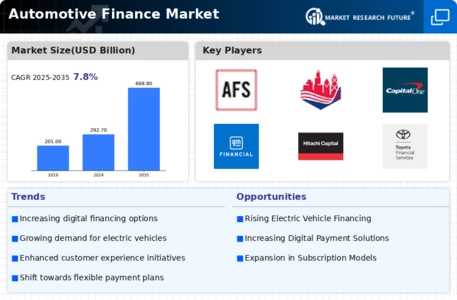

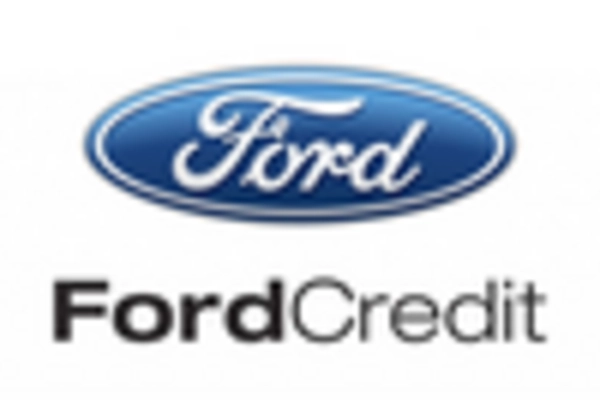

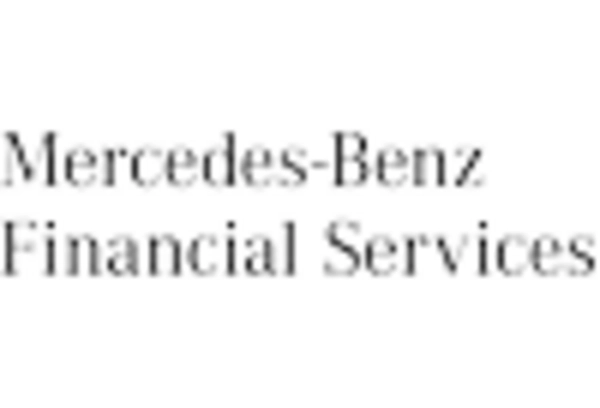
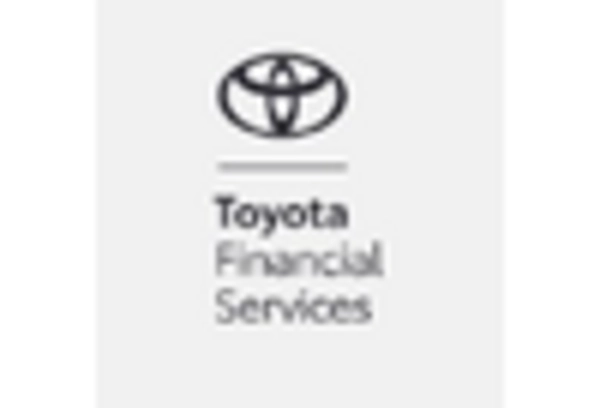
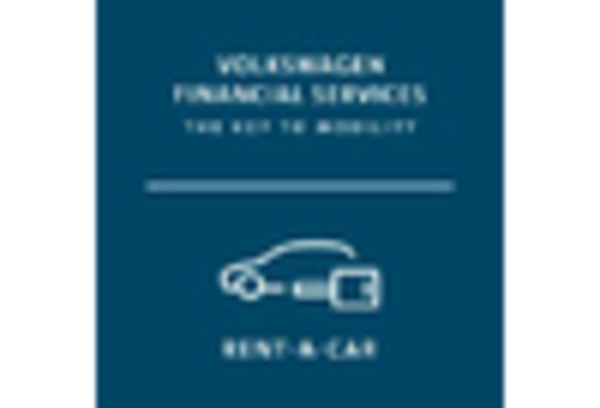

Leave a Comment